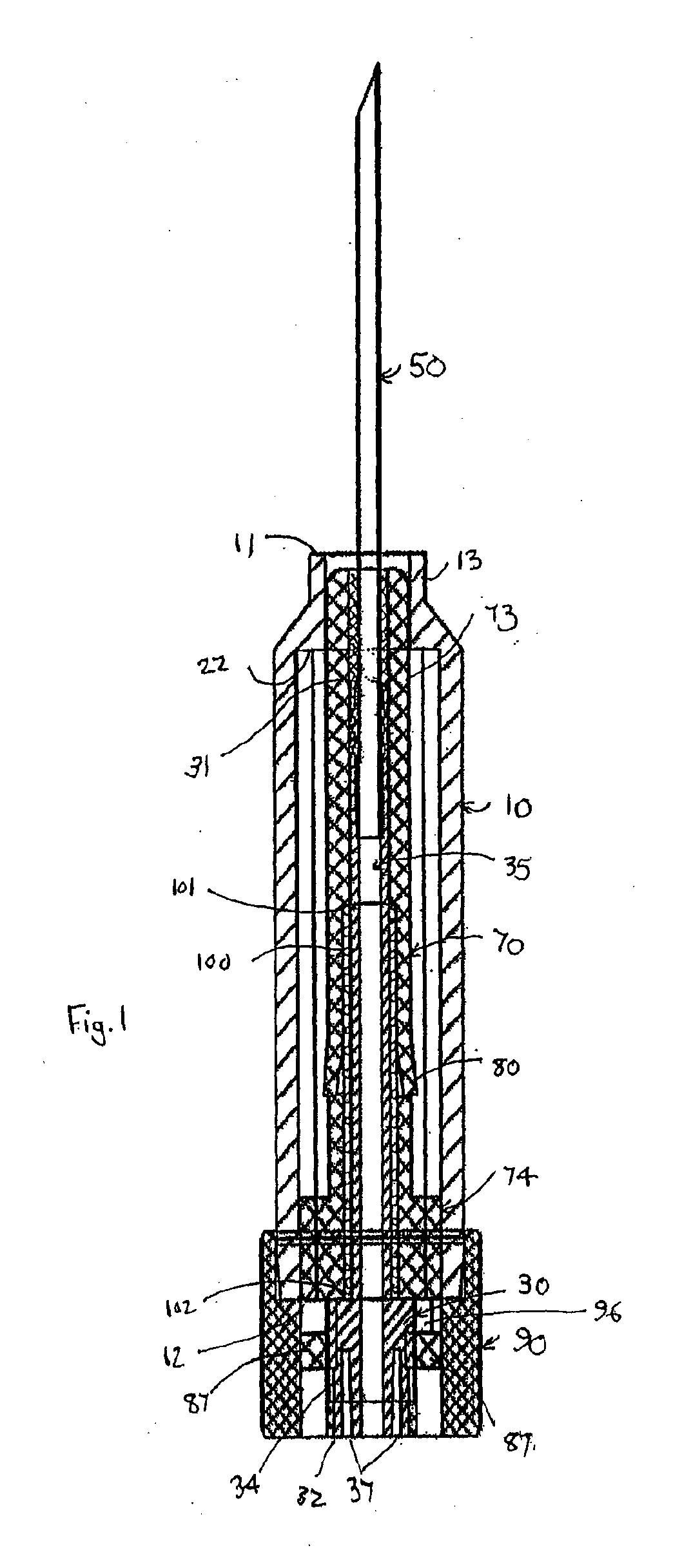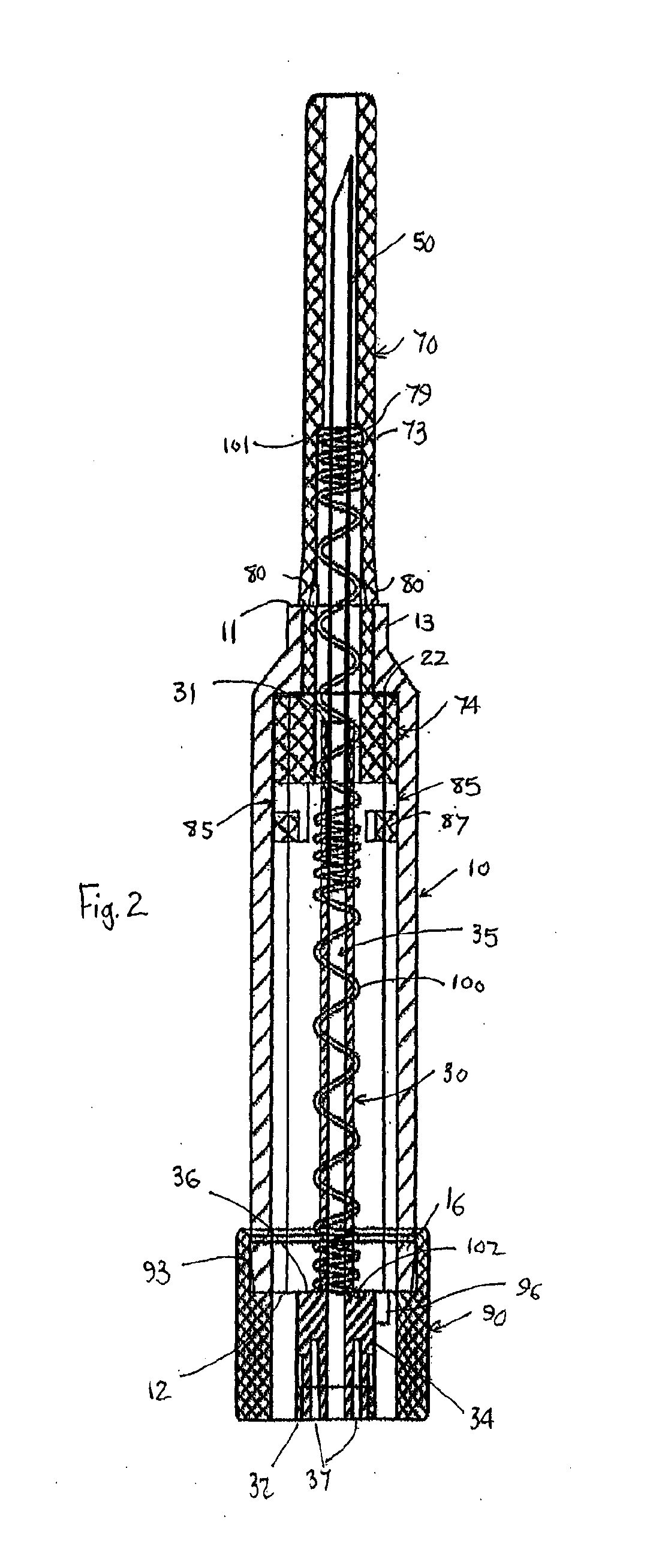Intravenous cannula assembly
a cannula and assembly technology, applied in the field of intravenous cannula assemblies, can solve the problems of relative clumsy procedures, risk of spreading blood-borne diseases, and medical practitioners/other personnel being infected
- Summary
- Abstract
- Description
- Claims
- Application Information
AI Technical Summary
Benefits of technology
Problems solved by technology
Method used
Image
Examples
first embodiment
Referring firstly to FIGS. 1 and 2 of the accompanying drawings, an intravenous cannula assembly 1 in the form of a blood bag needle assembly, generally comprises a barrel 10, cannula hub 30, cannula 50, cannula guard 70 and deployment mechanism which here includes a locking member 90 and spring 100. The barrel 10 has a barrel leading end 11 and a barrel trailing end 12. The cannula hub 30 has a hub leading end 31, a hub trailing end 32 and a hub aperture 35 extending therebetween. The cannula 50, here in the form of a blood bag needle, is mounted in, and in fluid communication with, the hub aperture 35 and extends from the hub leading end 31 through the barrel leading end 11. The cannula guard 70 is concentrically mounted about the cannula hub 30. The deployment mechanism is operable to deploy the cannula guard 70 from a retracted position, depicted in FIG. 1, at which it is at least substantially located within the barrel 10, to a deployed position, depicted in FIG. 2, extending ...
second embodiment
The cannula hub 230 of the second embodiment is depicted in detail in FIGS. 27 and 28. The cannula hub 230 comprises an elongate tubular hub stem 233 located towards the hub leading end 231 and a flattened hub boss 234 located towards the hub trailing end 232. A pair of opposing shoulders 236 are defined by the leading face of the flattened hub boss 234 were it meets the trailing end of the hub stem 233. A tapered tubular hub tail 237 extends between the flattened hub boss 234 and hub trailing end 232. The hub tail 237 has a tapered exterior diameter sized to receive a blood delivery tube (not depicted) such that the blood delivery tube is in fluid communication with the hub aperture 235 that extends through the length of the cannula hub 230. The hub aperture 235 is sized to receive the cannula / needle 250 at the hub leading end 231 with an interference fit so that the needle 250 remains fixed in relation to the cannula hub 230.
The cannula guard 270 of the second embodiment is depict...
PUM
 Login to View More
Login to View More Abstract
Description
Claims
Application Information
 Login to View More
Login to View More - R&D
- Intellectual Property
- Life Sciences
- Materials
- Tech Scout
- Unparalleled Data Quality
- Higher Quality Content
- 60% Fewer Hallucinations
Browse by: Latest US Patents, China's latest patents, Technical Efficacy Thesaurus, Application Domain, Technology Topic, Popular Technical Reports.
© 2025 PatSnap. All rights reserved.Legal|Privacy policy|Modern Slavery Act Transparency Statement|Sitemap|About US| Contact US: help@patsnap.com



